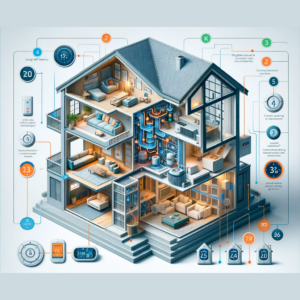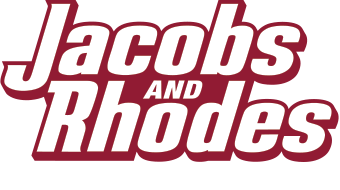7 Anticipated Trends in the HVAC Industry for 2024 and Beyond
 In an era marked by technological innovations and external factors such as extreme weather events and a global pandemic, the heating, ventilation, and cooling (HVAC) industry is undergoing a significant expansion.
In an era marked by technological innovations and external factors such as extreme weather events and a global pandemic, the heating, ventilation, and cooling (HVAC) industry is undergoing a significant expansion.
Contractors, including Jacobs and Rhodes, are adapting to these changes, ensuring they provide top-notch services to remain competitive. The emphasis on indoor air quality, ventilation systems, and energy efficiency has never been more critical. Coupled with evolving government regulations and incentives, the HVAC industry is experiencing a transformative period, offering both challenges and exciting opportunities.
Trend 1 – Surging Demand in HVAC Systems
The demand for HVAC systems is skyrocketing, growing at a rate exceeding 7%. In the United States, over 90% of households already utilize air cooling equipment, contributing to an annual spending of over $10 billion on HVAC repair and maintenance. Homeowners and property managers nationwide are increasingly focused on energy efficiency, prompting a shift towards higher efficiency systems capable of reducing energy usage by up to 50%.
Trend 2 – Proliferation of Smart Thermostats
A significant portion of ongoing HVAC projects involves the installation and use of smart thermostats in residential, apartment, and commercial buildings. Building owners and utility payers are drawn to the energy-saving features that cut costs and provide enhanced control over interior temperatures and comfort.
Trend 3 – Growing Demand for Energy-Efficient HVAC Systems
The rise of smart thermostats correlates with an increased demand for energy-efficient HVAC systems. While not every smart thermostat requires professional installation, new HVAC systems do. Innovations in furnace technologies, such as high-efficiency propane furnaces, condensing furnaces, and modulating furnaces, contribute to reduced energy consumption and greenhouse gas emissions.
Trend 4 – Elevated SEER Ratings for AC Units
The cooling sector witnesses a notable surge in demand for Seasonal Energy Efficiency Ratio (SEER) ratings, indicating the efficiency of AC units. High SEER ratings result in less energy consumption, increased cooling efficiency, and lower energy bills for building owners. Consumers consider SEER ratings a crucial factor in choosing AC units, incentivized by government programs promoting the adoption of highly rated units.
Trend 5 – Adoption of Ductless HVAC Systems
Homeowners are increasingly embracing ductless HVAC systems due to their energy efficiency and flexibility. The absence of ductwork in the installation process makes it less invasive, particularly appealing to those in older homes where traditional ductwork is impractical.
Trend 6 – Shift to Low-GWP Refrigerants
The HVAC industry is actively adopting low-GWP (Global Warming Potential) refrigerants, such as freon, to align with updated standards. Building owners are replacing outdated systems like R-22 with environmentally friendly options, providing not only a safer solution but also enhanced system efficiency.
Trend 7 – Persistent Labor Shortages
Labor shortages continue to pose challenges for contracting businesses, with a projected net new job increase of 546,000 this year. Amidst the struggle to complete projects and attract skilled workers, the HVAC technician job outlook is expected to rise by 5% by 2031.
How Jacobs and Rhodes is Responding
As consumer demand escalates and competition for skilled professionals intensifies, HVAC businesses, including Jacobs and Rhodes, are seeking ways to maximize efficiency, attract top talent, and ensure quality service.
Staying abreast of industry trends, embracing technologies such as smart thermostats and energy-efficient systems, and emphasizing quality in service and tools are vital strategies for HVAC contractors.
Through continuous learning, commitment to high-quality service, and the use of durable tools, contractors will uphold safety and comfort standards in the HVAC industry.
Contents
- 1 Trend 1 – Surging Demand in HVAC Systems
- 2 Trend 2 – Proliferation of Smart Thermostats
- 3 Trend 3 – Growing Demand for Energy-Efficient HVAC Systems
- 4 Trend 4 – Elevated SEER Ratings for AC Units
- 5 Trend 5 – Adoption of Ductless HVAC Systems
- 6 Trend 6 – Shift to Low-GWP Refrigerants
- 7 Trend 7 – Persistent Labor Shortages
- 8 How Jacobs and Rhodes is Responding

 Jacobs and Rhodes
Jacobs and Rhodes Jacobs and Rhodes
Jacobs and Rhodes